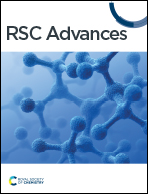Exploring protein–ligand binding affinity prediction with electron density-based geometric deep learning†
Abstract
Rational structure-based drug design relies on accurate predictions of protein–ligand binding affinity from structural molecular information. Although deep learning-based methods for predicting binding affinity have shown promise in computational drug design, certain approaches have faced criticism for their potential to inadequately capture the fundamental physical interactions between ligands and their macromolecular targets or for being susceptible to dataset biases. Herein, we propose to include bond-critical points based on the electron density of a protein–ligand complex as a fundamental physical representation of protein–ligand interactions. Employing a geometric deep learning model, we explore the usefulness of these bond-critical points to predict absolute binding affinities of protein–ligand complexes, benchmark model performance against existing methods, and provide a critical analysis of this new approach. The models achieved root-mean-squared errors of 1.4–1.8 log units on the PDBbind dataset, and 1.0–1.7 log units on the PDE10A dataset, not indicating significant advantages over benchmark methods, and thus rendering the utility of electron density for deep learning models context-dependent. The relationship between intermolecular electron density and corresponding binding affinity was analyzed, and Pearson correlation coefficients r > 0.7 were obtained for several macromolecular targets.

- This article is part of the themed collection: RSC Advances Computational Chemistry year in review 2024


 Please wait while we load your content...
Please wait while we load your content...